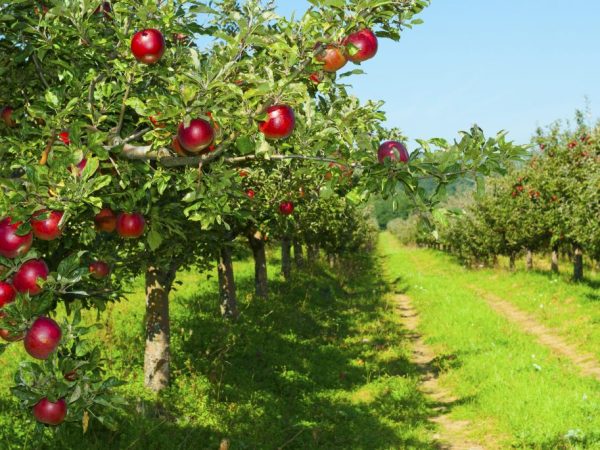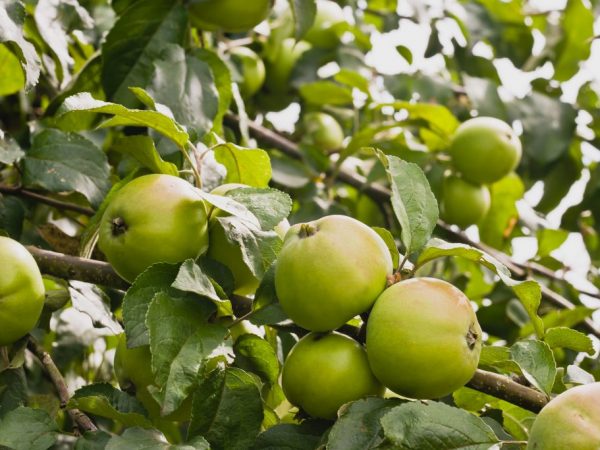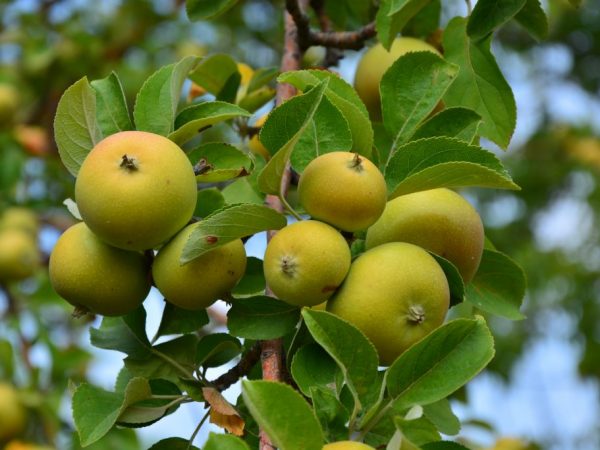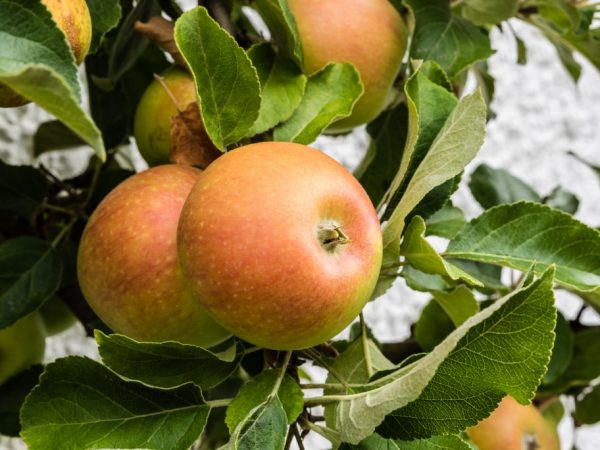The most popular apple varieties for the Urals
The best apple varieties for the Urals are selected according to the climatic features of the region. Long cold winters, mild summers and a short off-season are combined with sharp temperature changes and create not the most favorable conditions for apple trees. For this reason, they choose not just stable hybrids, but those crops that do not require special care.

The most popular apple varieties for the Urals
Best winter views
There are three main groups of apple trees that are suitable for planting in the Urals. These are winter, summer and dwarf varieties. Autumn and late hybrids can also be planted in difficult climatic conditions, but for this the gardener will need to provide proper and regular tree care.
Winter varieties for the Trans-Urals are the most suitable option.
Suitable winter apples are characterized by the following characteristics:
- long shelf life - they can hang on branches or lie in boxes without losing their quality characteristics;
- harvest fruits unripe, they "gain" nutrients after harvest;
- during the storage period, winter varieties change the color of the peel, begin to thin out a pleasant aroma;
- changes concern not only the appearance of the fruit, but also its composition - the pulp has a pleasant aftertaste.
Late species have a universal purpose - they are stored, processed (made into juices) and consumed raw. They can be planted throughout the Urals, having allocated a small plot of land.
Pervouralskoe
Pervouralskoe is a thermophilic apple tree. It is scab resistant and rarely gets sick. The hybrid is known for its tasty, moderately large fruits. They are rich in vitamins and microelements useful for the body. Pervouralskoe is a medium-sized tree. The annual growth is at least 50 cm.
Apples have a delicious, juicy pulp. A stable yield is combined with resistance to temperature changes, even in winter. The crown is oval, moderately thickened. The leaves are dark green.
The weight of one fruit is 150 g. The record-holding fruit weighs up to 300 g. The yield of the hybrid is high: it is up to 200 centners from 1 hectare of the garden. Tasting assessment of the Pervouralskoye variety - 4.5 points.
Antonovka
One of the most popular apple crops is Antonovka. The variety includes many subspecies: it is used to breed new hybrids. The fruits are medium in size and very tasty. They are removed yellow, and then they are allowed to “lie down”.
A month later, the pulp "picks up" the sweetness. The aroma is strong, spreading throughout the room where the fruits are stored. A blush may appear, but only after the apples "stop" in the sun.
The sugar content in apples is not less than 9%. There is sourness, but it does not spoil the taste of the fruit. The pulp contains a large amount of vitamin C.
According to the description, the advantages of Antonovka include high winter hardiness.Apples are used for processing. They are delicious raw too. Saplings of the variety are vigorous and strong.
Ligol

Trees are easy to care for
A popular culture among gardeners in Belarus and Russia. A fast-growing hybrid does not suffer from winter frosts. It is durable and easy to maintain. Differs in good keeping quality, and the fruits are stored for up to six months.
The apples of the species are heavy - this is a large-fruited hybrid that is grown for sale. Fruits have an attractive presentation.
Consumer maturity occurs in the middle of winter. Unripe fruits are removed and then placed in wooden boxes. The apples are tasty, juicy, with tender pulp. The weight of one fruit is 250 g. The peel is yellow with a blush. The shape is round, slightly elongated. The pulp is dense with fine grain.
The tree is a medium-sized crop with a lush crown. The diameter with constant pruning is up to 3 m. The annual growth is at least 1 m. The yield is high. In a young tree, the harvest weight is 5 kg, and in an adult - 45 kg.
The best autumn varieties
Early varieties (or fall varieties) are unpretentious crops that produce large apples. Large-fruited hybrids can be grown in the Urals. They give a stable harvest and do not suffer from frost in winter.
New and early varieties for the Middle and Northern Urals:
- Giant;
- South Ural;
- Strafling.
Strafling
Autumn varieties such as Streyfling are distinguished by high yields. The culture is demanding to care for: it needs regular watering and fertilization of the soil. If there is not enough moisture, the fruits grow unevenly - they are deformed and tasteless.
The variety is frost-resistant. The fruits have a high tasting rating and can be stored for up to 5 months.
The tree is tall - up to 9 m. The crown is wide and dense. In the spring, the gardener needs to prune the branches: they form a pot-like shape.
The weight of one fruit is 150 g. The maximum yield is reached in the 20th year. Up to 180 kg of tasty fruits are harvested from one tree. The keeping quality of the fruit depends on the conditions created. Average shelf life is 4 months. The hybrid is resistant to scab and powdery mildew.
Giant

The Giant variety will delight you with its yield
Autumn varieties such as the Giant are relatively new but promising. The trees are vigorous, with a dense, wide crown. Over the years, the gardener forms a pot-like shape. The skeletal branches are large and heavy.
The shoots are densely covered with foliage. They grow obliquely and often stretch to the ground. The foliage is large, dark green in color.
The fruits are heavy and large. The mass of one fruit is 450 g. The relief of the fruits is uniform, and the skin is smooth. The main color is green-yellow. Blush is formed only on well-lit land plots. Hybrids such as the Giant produce a stable harvest from September to October.
Best summer hybrids
These apple trees are characterized by an early ripening period. On the territory of the Urals, early hybrids bear fruit steadily from year to year. Their shelf life does not exceed 4 months.
Such crops are distinguished by tasty, juicy and moderately tender pulp. They are sweet with a slight sourness. The most popular summer hybrids for the Ural region:
- Candy;
- White filling;
- Lungwort.
Summer crops are not as persistent as winter crops, so they need shelter. Mulching is carried out after harvesting.
Candy
Among the Ural species, this apple tree is the easiest option for planting. An unassuming variety with good, stable yields. The maximum number of fruits harvested is set for the 9th year. From this time on, the apple tree requires minimal maintenance.
The apples are medium in size. The weight of one fruit is not more than 120 g. The surface of the fruit is even, without pronounced ribbing. The skin color is green-yellow. As the apples ripen, they turn yellow, they have a characteristic honey color. The pulp is juicy and tasty.
The shelf life of the fruit is 70 days. They grow the variety Candy for sale - it survives transportation well.A ripe product is valuable for iron, which is found in large quantities in fruits. Use the species for making cider, jelly and various compotes.
White filling
Medium-sized tree for the Northern and Middle Urals. He has a dense crown with dark leaves. The shape of the crown is pyramidal. Small foliage. The surface of the plate is matt. The fruits are round and medium in size. The weight of one apple is 200 g.
The taste of the fruit is peculiar:
- unripe fruits are sour - they have a strong aroma, and the pulp is juicy;
- ripe apples are sweet and aromatic - they are softer than green fruits, and the pulp already contains up to 10% sugar;
- overripe fruits lose their taste - they are lethargic, and the pulp loses all juiciness - they are popularly called "potatoes".
Lungwort

The tree is resistant to diseases
Among the Ural apple crops, Medunitsa stands out favorably. It is a hardy species with high immunity to diseases. A tall tree is densely hung with fruits - such a culture serves to decorate any garden.
The maximum height of the apple tree is 7 m. The shape of the crown is pyramidal. Shoots are moderately formed. The leaves are light green.
Medium-sized fruits. Weight - 150 g. Oval shape. Fruit color is yellow-red. The stripes characteristic of the variety appear closer to the ripening period. The fruits are delicious and sweet. The pulp contains up to 15% sugar. The acidity of the ripe product is reduced, and the tasting score is at least 5 points. The aroma is pronounced.
The most delicious varieties
The most delicious apples are hybrids - not only resistant crops were bred by selection, but also trees that give a stable, tasty harvest. Such hybrids are young, but they have already become popular throughout Russia.
Sourness is palpable in such fruits. The fruit has a firm pulp. The following hybrids are suitable for the Urals:
- Melba. One of the most delicious early ripening hybrids. From the 5th year it gives a stable harvest. The weight of one fruit is 200 g. The color of the fruit is yellow, rich and bright. The pulp is tender and juicy. Melba has a high tasting score - up to 4.7 points. The culture ripens at the end of August. The right pollinators are chosen for her: for these purposes, the high-yielding Welsey hybrid is suitable. Disease resistance is average;
- Belarusian sweet. Fast-growing culture. A tree of medium height - up to 3 m. The crown is artificially cut. The fruits are large, up to 180 g each. The shape is round, sometimes asymmetrical. The rind is smooth and thick. The color is green-yellow. The blush that appears on the fruit before ripening covers most of the fruit. The pulp is light, tender, juicy. The taste of the fruit is sweet;
- Uralochka. The variety is called an ideal option for the northern regions of the country. He has a good adaptation - he is unpretentious in the composition of the soil and in maintenance. Withstands temperatures down to -57 ° C. It is used as a rootstock to increase the winter hardiness of other hybrids. The crown is thick, round in shape. The branches are thin, close to each other. Inflorescences are pink. The taste is reminiscent of the Papirovka variety. The size of round fruits is medium.
Dwarf subspecies
Dwarf subspecies are the most productive. They were bred for two purposes - to minimize the space occupied by the tree in the garden and to obtain a tasty healthy harvest. Suitable for the Urals:
- natural dwarfs;
- tall trees on a dwarf rootstock.
Dwarf trees grow no higher than 2 m.They are planted according to a simplified scheme: the distance between seedlings should be no more than 1 m.
Wonderful
Frost-resistant and adaptive look. A stunted tree is a natural dwarf. Crown diameter - not less than 4 m. Used as early species for rootstock. Planting is carried out in spring and autumn.
Fruits are medium in size. Weight is 140 g. Fruits are flat-round. There is ribbing, but not much. The color is yellow-green. The pulp is juicy and dense - for such characteristics the variety is loved by gardeners. High tasting score - up to 5 points.
The most winter-hardy hybrids

Frost-resistant varieties are not afraid of frost
Frost-resistant hybrids are the most popular in the colder regions of the country.
This is the most important characteristic that guarantees the gardener stable fruiting. Regardless of the ripening period, only frost-resistant varieties are chosen for planting. Such trees endure the first cold and frost: by this time the gardener had already pruned and mulched the soil.
Gradually, cultures adapt, and even sudden changes in temperature are not afraid of them.
Frost-resistant varieties quickly recover - immediately after warming, the tree begins to grow, and then lateral branches start growing. Winter-hardy hybrids are insensitive to winds. They tolerate drought well - in summer such crops are not threatened by high temperatures and lack of moisture.
Such hybrids are not afraid of the first spring frosts, and if by this time the apple tree has blossomed, the inflorescences do not fall off.
Uralets
Winter-hardy species, such as Uralets, do not require shelter during the cold season. The gardener can protect the rhizome of the crop, and remove the mulch by spring. Tree planting and harvesting is carried out in early autumn.
The trunk is strong and high. The weight of one fruit is 70 g. The shelf life of fragrant apples is up to 1.5 months. The fruits are consumed fresh and used for making juices.
The most hardy crops
For gardeners whose land plots are located in the Urals, another characteristic is important - the resistance of the hybrid to common diseases.
Apple trees can be affected by scab or powdery mildew. A distinctive feature of the Ural climate is a large amount of precipitation - this is high humidity, which creates a dangerous situation for trees. To prevent rotten diseases from spreading throughout the garden, resistant apple varieties are chosen.
Souvenir
The souvenir has the best breeding characteristics. The variety has large fruits and a long shelf life. A hybrid beneficial for gardeners can be planted on any plot of land. It has good adaptability and requires minimal maintenance.
The tree is of medium height, the crown is round. Leaves are pointed. Fruits are medium in size, weighing up to 120 g. The color is pink. Yellow blotches are not pronounced. The hybrid has a stable yield.
Beauty of the Urals
The beauty of the Urals is a high-yielding variety. It has large fruits, weighing up to 160 g. The pulp is tender and juicy. The taste is sweet and sour. The tree is of medium height. Harvest not earlier than September. You can store the fruits for up to 6 months. The variety has good resistance to any garden diseases.
Gardeners reviews
Gardeners' comments on apple varieties for the Urals are positive. The bred hybrids can survive in difficult climatic conditions. They are adaptive and have good resistance to diseases such as scab and powdery mildew. The main feature of such hybrids is their high winter hardiness. The fruits ripen at different times - from late August to October.


